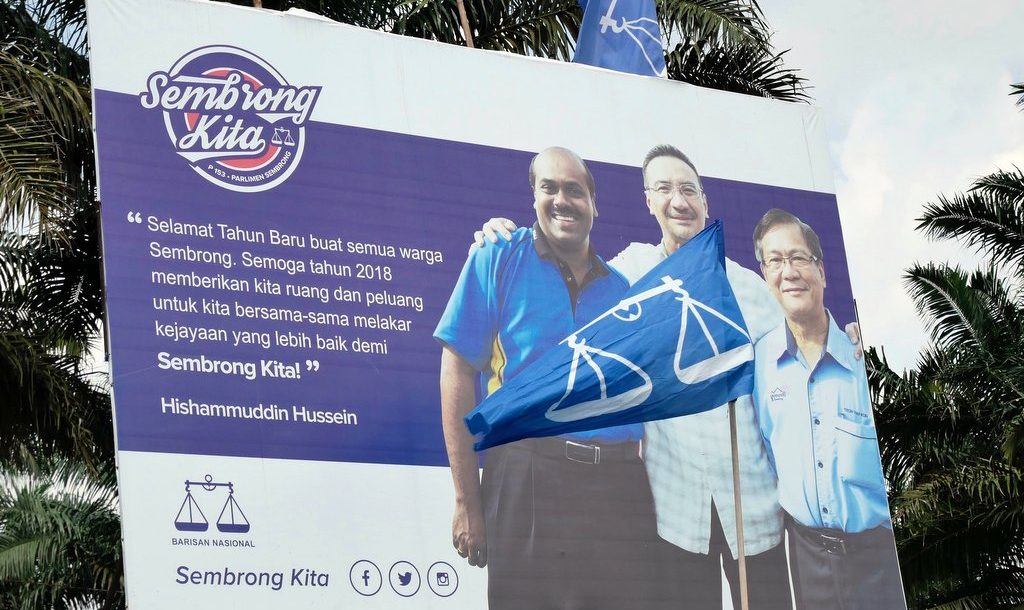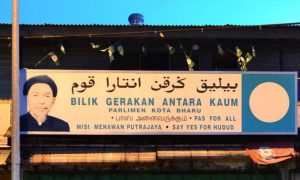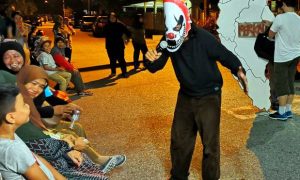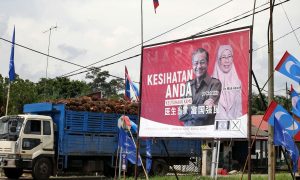A number of themes stand out in any Malaysian election campaign, and in this one especially. Here are my glimpses as the GE14 campaign picked up speed across the peninsula:
FOOD: Nothing happens in Malaysia on an empty stomach; campaigning is no exception. Ceramah are a chance to makan, often for free: food is perhaps the most common lure to draw attendees.
Campaign events offer opportunities for the enterprising to hawk their wares, as along the margins of this kampung ceramah in Parit Jawa, Johor.
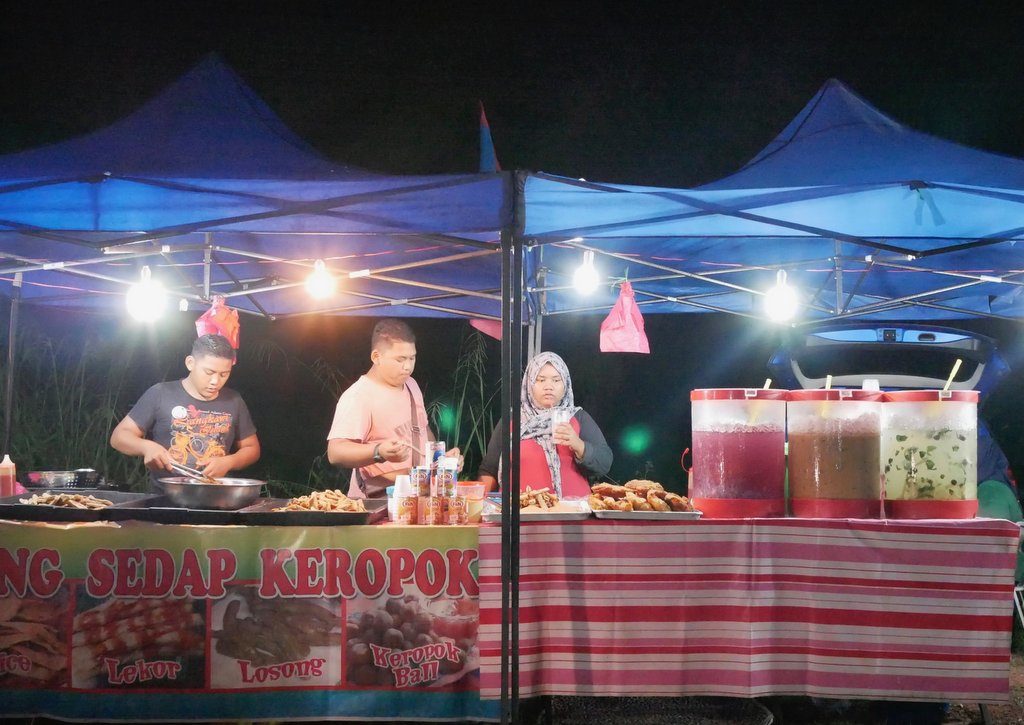
Those content with simpler fare could dine for free, instead: ceramah as dinner-theatre.

The chef, security, and hangers-on watch as Najib dines al fresco among supporters following a BN ceramah in Wangsa Maju, Selangor.
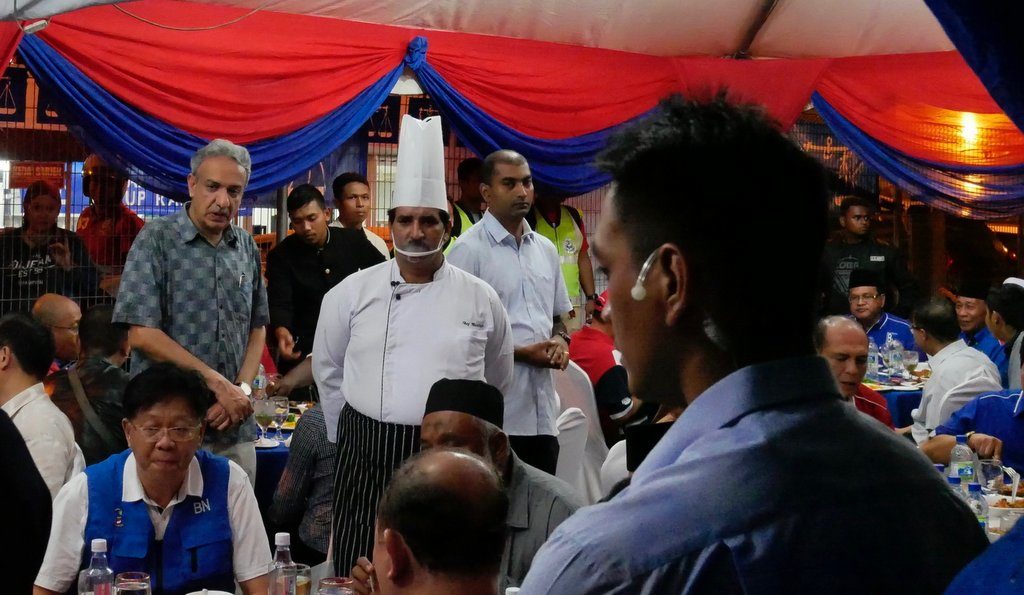
COFFEESHOP TALK: The Malaysian kopitiam, a time-honoured institution, takes on special significance during an election. Campaign teams have their hangouts near their bilik gerakan (campaign centre), for downtime and treating visitors. But more importantly, it is in the all-important coffeeshops that the real political debate happens, as seniors reminisce, the hard-pressed grumble, and everyone checks the latest in their WhatsApp groups.
A group of men listens to speakers at a Pakatan ceramah in Shah Alam, Selangor from the comfort of a close-by coffeeshop.
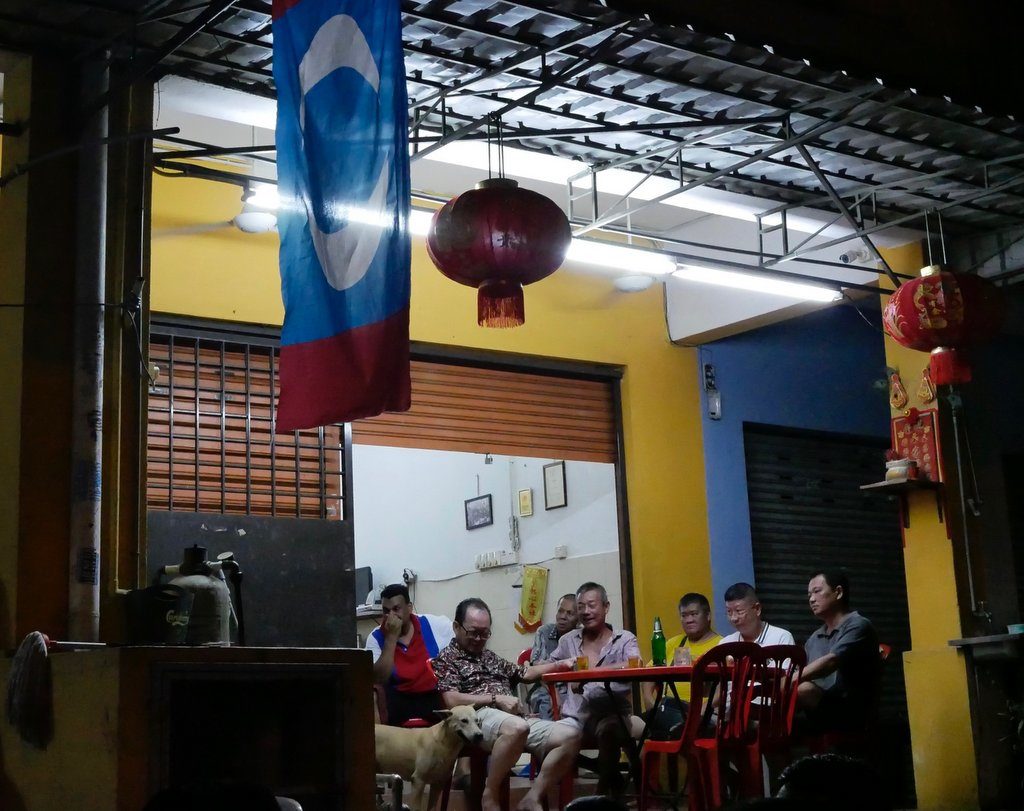
Even BN teams frequent this coffeeshop in Chemek, Johor, notwithstanding its Pakatan flags. Elderly men grumble at the difficulty of making ends meet and speak with wistful pride of their children, who have migrated to the city or Singapore in search of better lives.
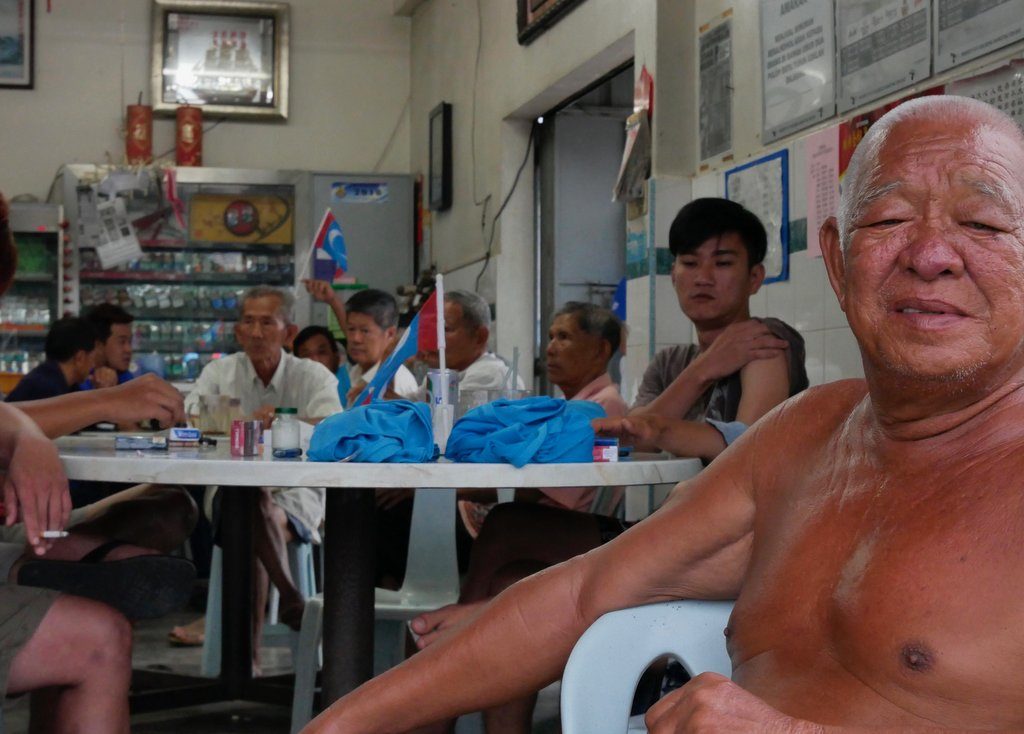
SWAG: The best advertising is that worn by supporters—what more when those fans buy it themselves, thereby replenishing the campaign kitty. T-shirts, hats, buttons and badges, and more have become an industry unto themselves on the opposition side, though the BN still commonly distributes its swag for free. The DAP in Kluang engaged a local artist to design hip mugs, T-shirts, and bags emblematic of different parliamentary constituencies in Johor—and sold out most of the popular items almost immediately.
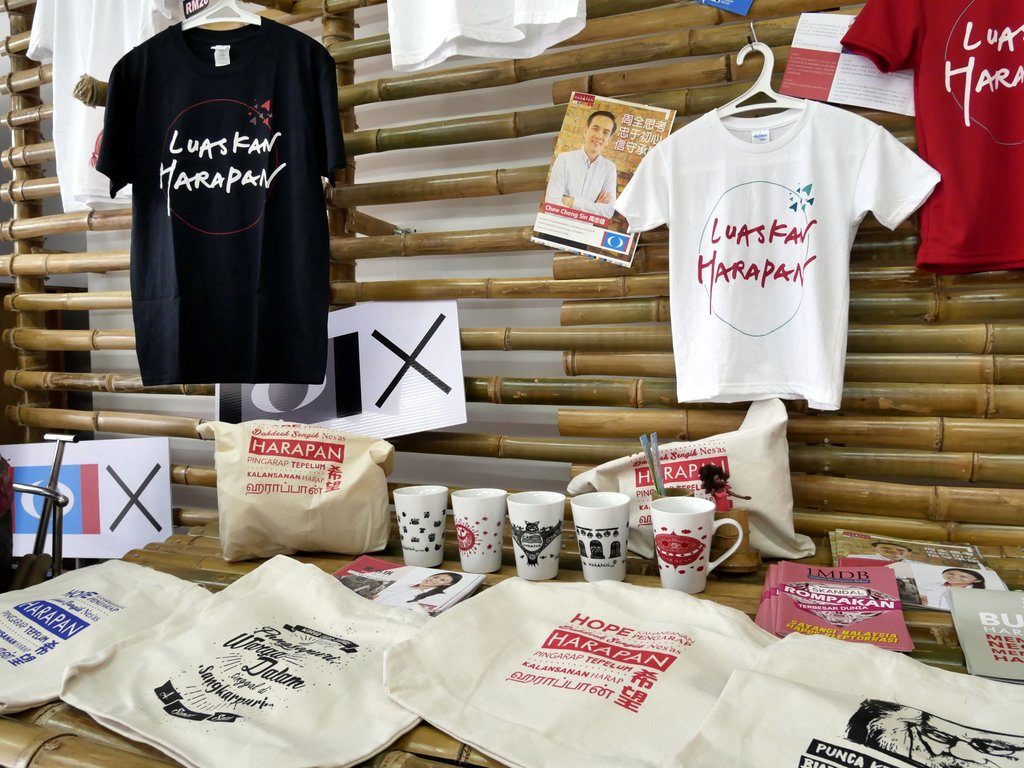
TEAMS: Campaigning is highly labour-intensive, taxing candidates’ and supporters’ families and roping in hordes of paid or unpaid volunteers. Among their tasks are, for instance, hanging endless flags, banners, and posters; staffing campaign bilik gerakan; directing traffic and keeping the peace at campaign events; coordinating and joining walkabouts and other outreach efforts; and simply keeping track of who is where, when.
The friendly volunteers at the BN polling-area headquarters in Paloh, Johor welcome a visitor.
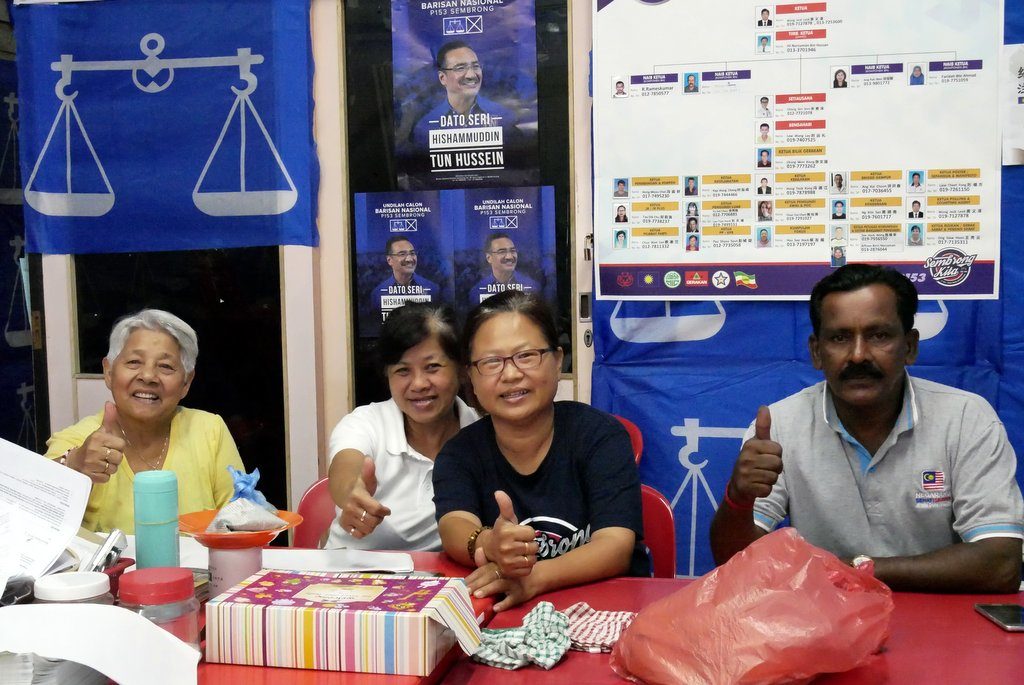
Just up the block, the DAP’s Sheik Omar Ali shows off his more bustling—and architecturally striking—bilik gerakan.
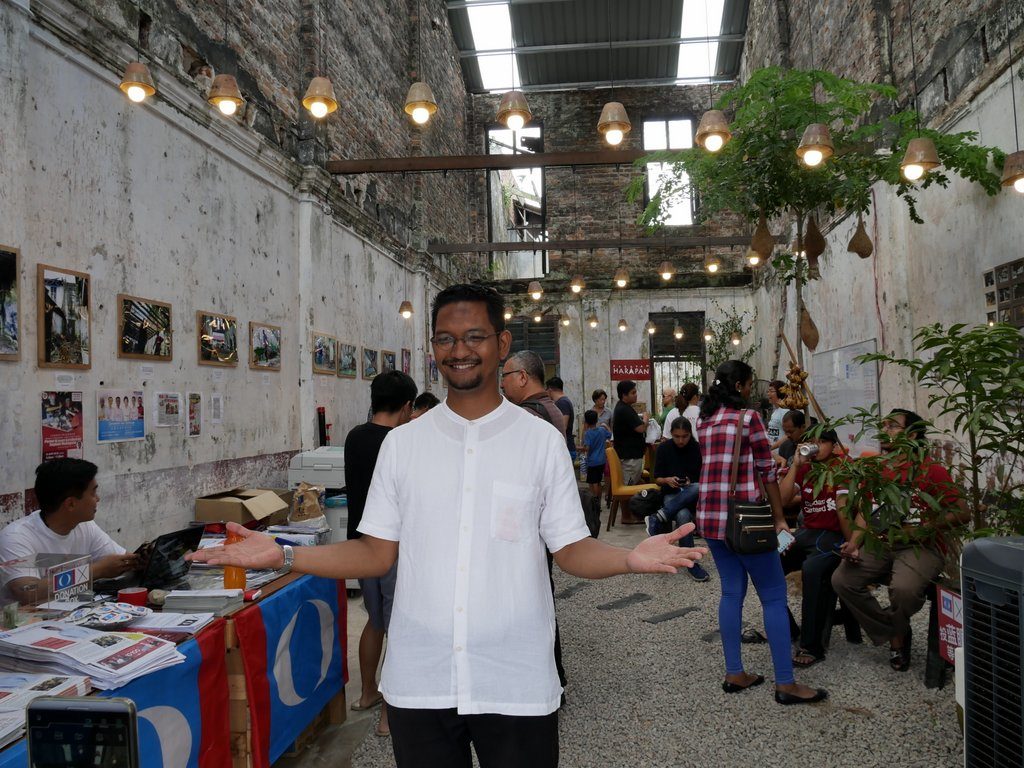
Among the volunteers working there (and visitors enjoying kueh and wifi) is Sheik Omar’s young family: the core team for almost any candidate.
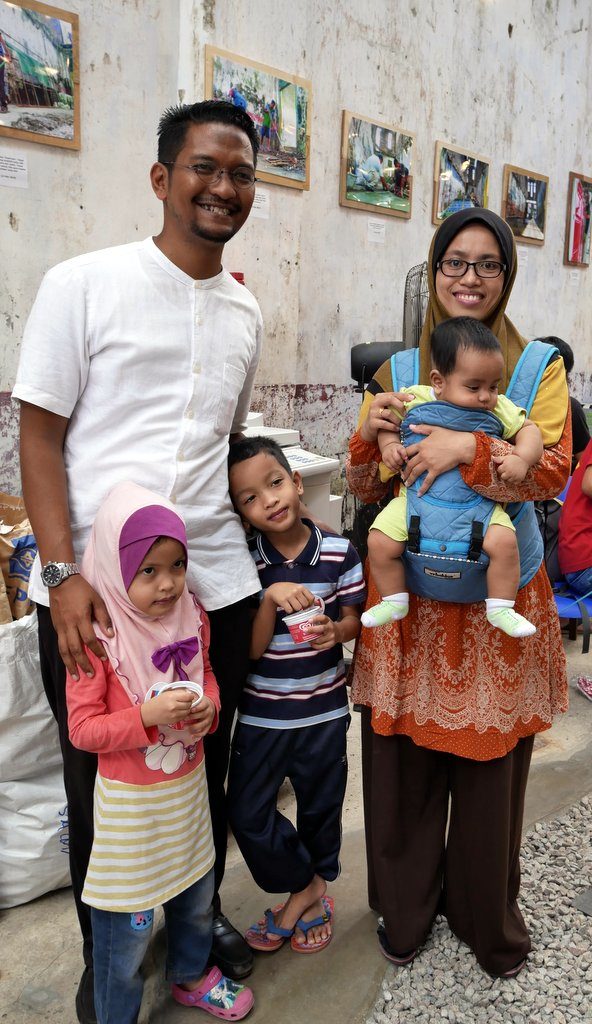
A range of non-party groups typically join the fray on both sides, including as volunteers and funders. Especially important on the Pakatan side for last election and this one is the Bersih network; this cluster joined a Pakatan ceramah in Hulu Kelang, Selangor.
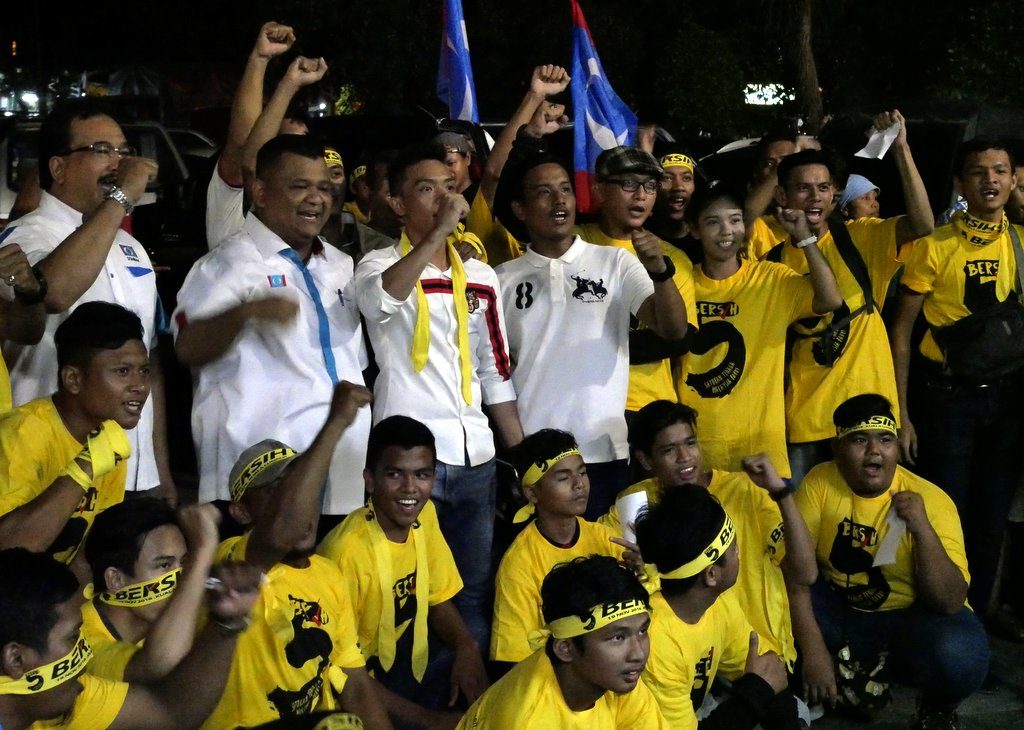
TITANS: Beset by scandals, Najib is less omnipresent this time than in GE13, where his ever-visible visage lent the campaign a “presidential” tinge. (Wife Rosmah is virtually absent from the visual landscape.) Local leaders loom large, instead, on multifarious “pilih biru” (choose BN-blue) and other posters. Meanwhile, the Pakatan troika of Mahathir, Anwar, and Wan Azizah signal their presence and cooperation on coalition banners. In a controversial, eleventh-hour pronouncement, the Election Commission prohibited posters and banners from depicting individuals other than the local candidate and state and party leaders—a move widely presumed to target Pakatan, not least since, for instance, Chinese premier Xi Jinping continued to grace unusual BN posters touting close MCA ties with China. (Unlike BN, Pakatan still awaits registration as a coalition, so component-party leaders have no official connection with candidates from fellow parties, and the imprisoned Anwar is out of the picture altogether.)
The Pakatan team in Ayer Hitam, Johor enjoyed dramatic free publicity when the Election Commission (EC) decided to excise Dr Mahathir from a large banner near their bilik gerakan rather than remove the entire banner altogether.
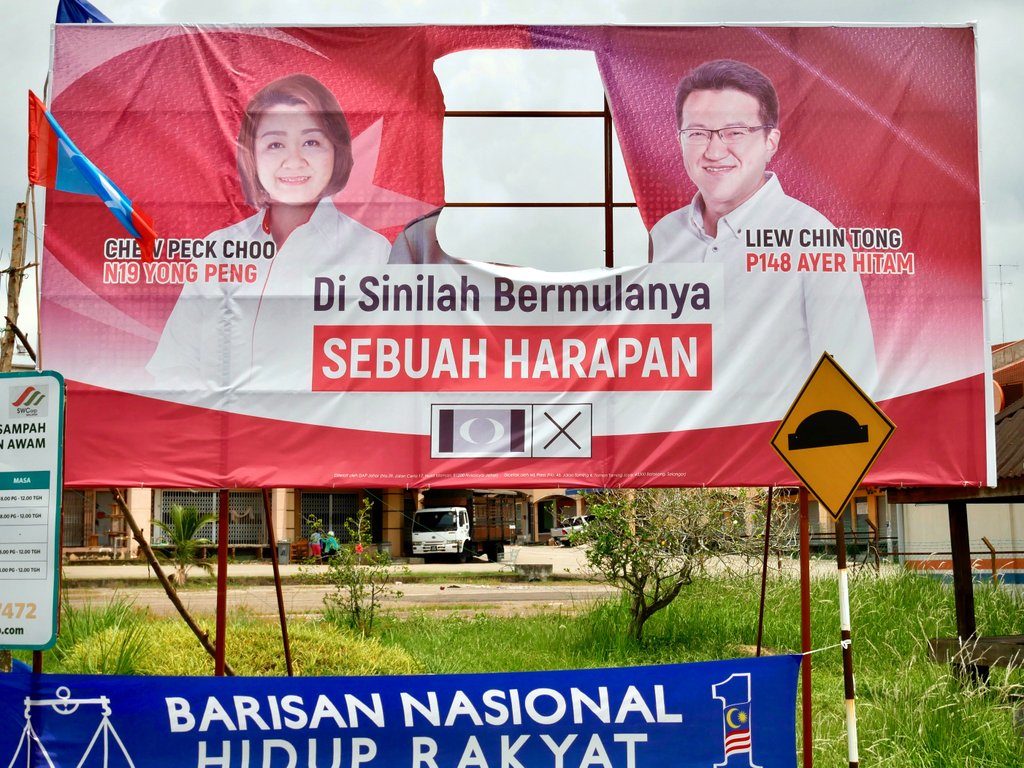
Elsewhere—as here in Teluk Intan, Perak—Mahathir still backs his coalition’s candidates.
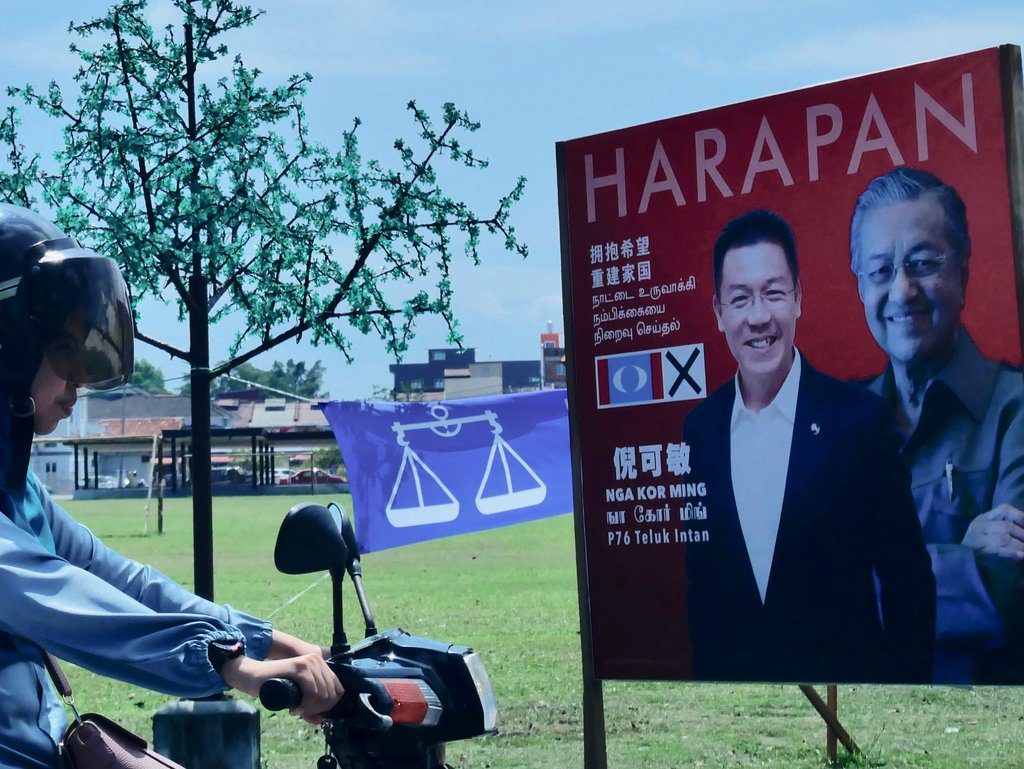
Najib and billionaire investor Jack Ma join forces to offer assurance, amidst a Johor palm oil estate, of a lucrative, high-tech future to come.
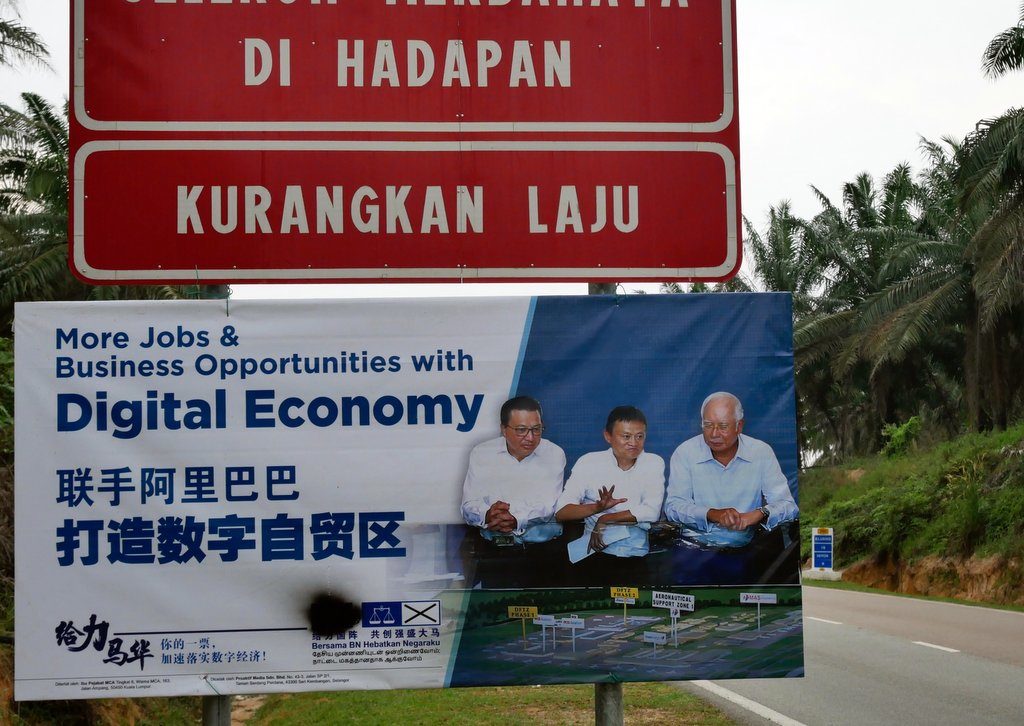
GOODIES: Elections are a chance to share the wealth—or at least, to promise to do so, if elected. While outright vote-buying is less common in Malaysia than elsewhere in the region, project grants and welfare promises or well-timed distributions are legion, and a staple of both BN and opposition campaigns. A flurry of roadworks (as here among oil-palm plantations in Perak) is a sure sign of an impending election—last-ditch efforts to fulfil campaign promises from the last round and/or a chance to demonstrate the incumbent administration’s efforts to develop Malaysia, lest voters forget as polls approach.
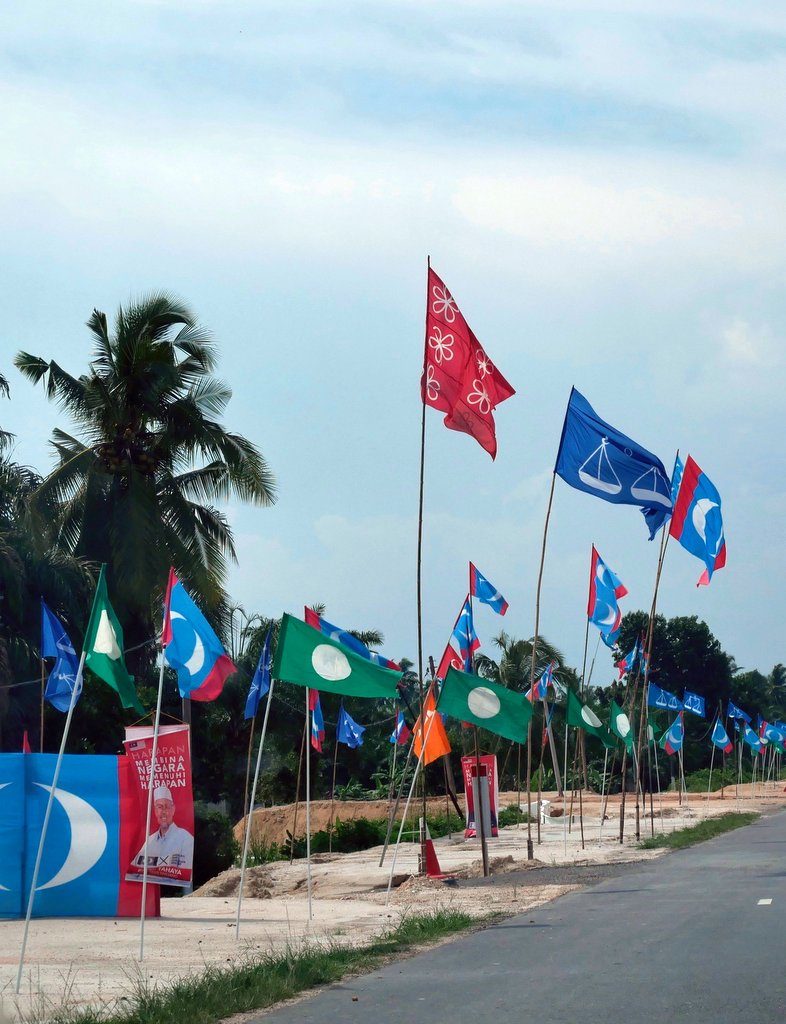
PROGRAMS: However obvious the election “sweeteners”, Malaysian parties do present coherent, differentiated policy programs and directions. Development, achieved thus far or still ahead, dominate BN messaging. Pakatan places economic programs front and centre in its campaign, as well, albeit emphasising a different timbre of economic stewardship through its stress on the costs of corruption and rising household expenses, especially given a still-new (and likely to increase) GST.
PKR’s Rodziah Ismail details Selangor’s state-level, cradle-to-grave basket of social welfare programs at a ceramah in Shah Alam, Selangor, from education benefits to sponsored “Jom Shopping” outings for seniors.
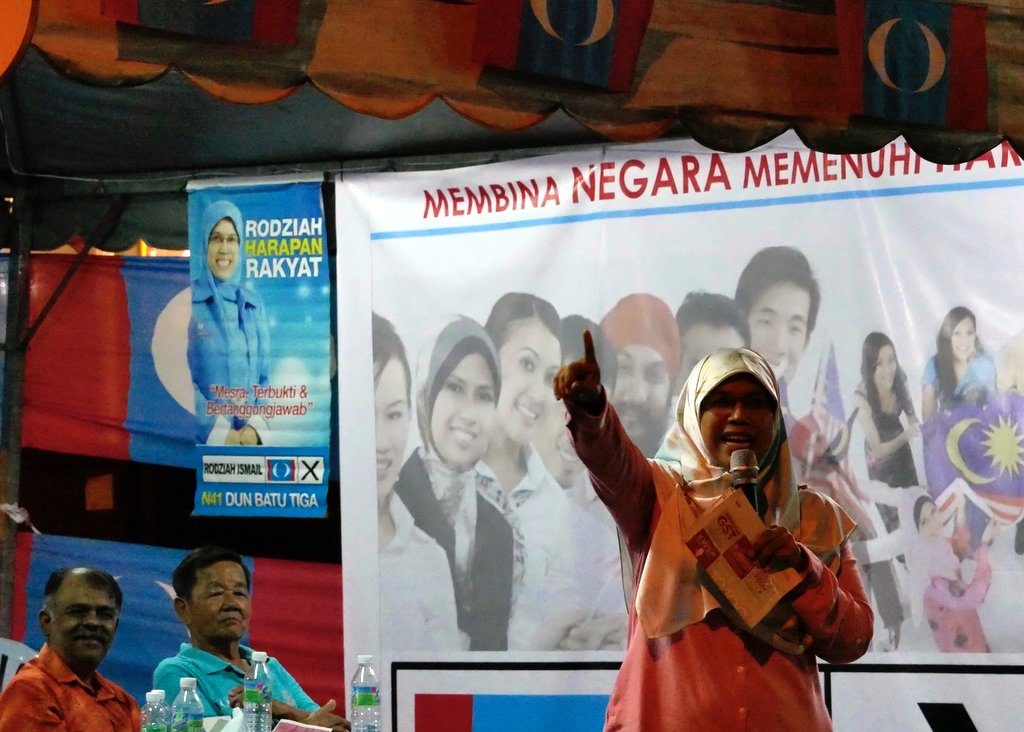
But the biggest such scheme is the federal-level unconditional cash-transfer scheme, Bantuan Rakyat 1Malaysia (BR1M): the BN announced two supplemental payouts to come this year in the months following the election, should his coalition be returned to power. An ad campaign centring happy BR1M recipients among swank infrastructure, healthy families, and other images of a carefree, developed, prosperous Malaysia peppered buses and Kuala Lumpur’s MRT system, including this bus in Slim River, Perak.
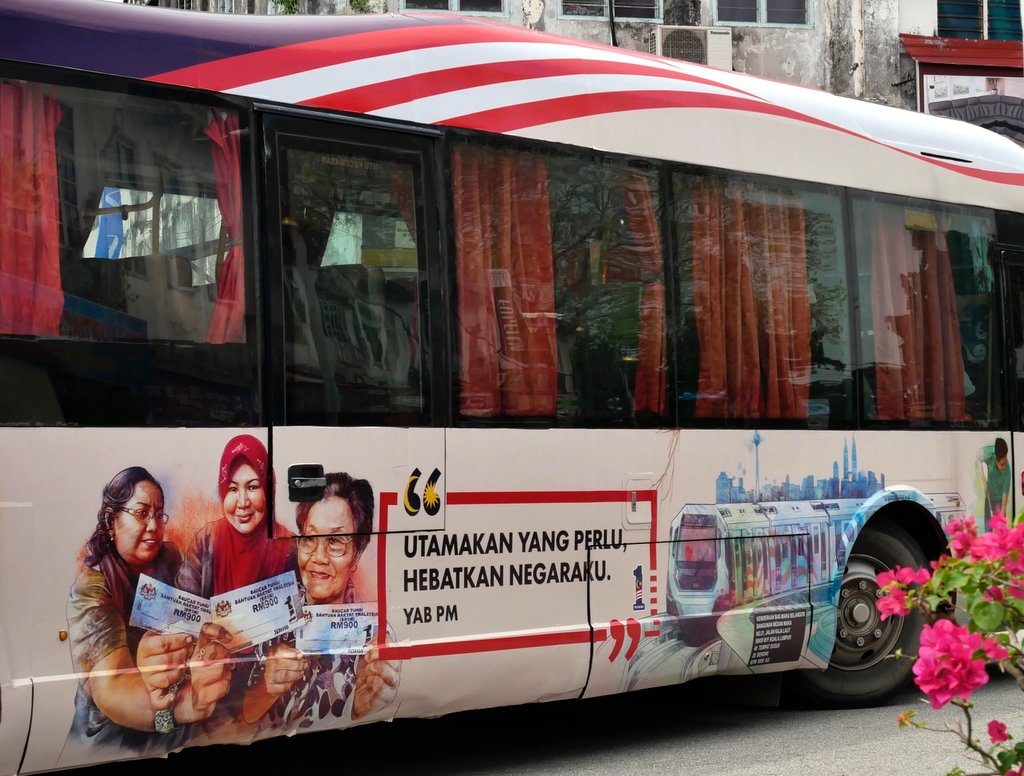
The BN also stresses targeted economic development programs, including for New Villages, which the MCA in particular prides itself on supporting.
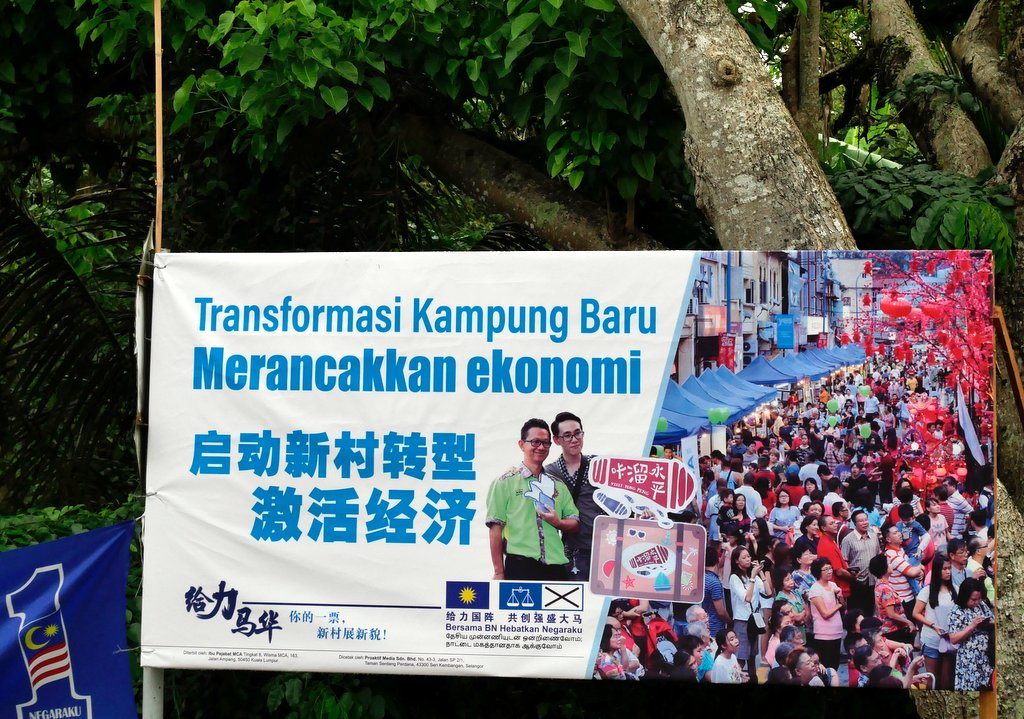
…and a multi-faceted development plan, including higher education, flood protection, highway access, low-cost housing, and free wifi, for Teluk Intan, Perak.
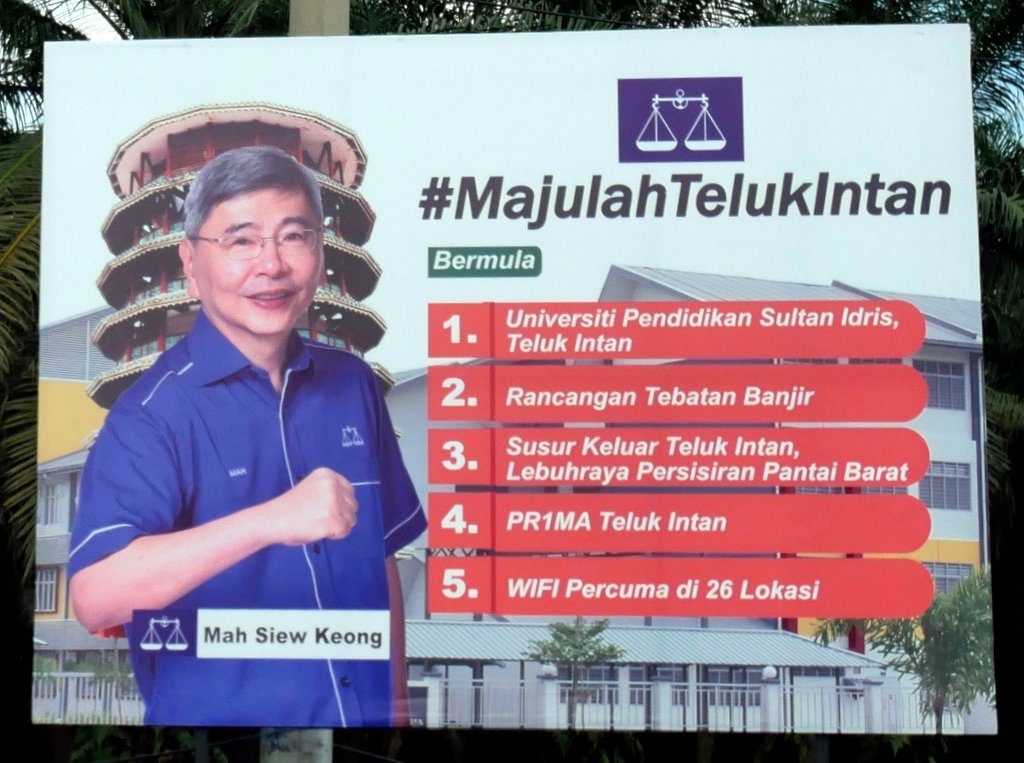
Pakatan announced a roster of 10 promises to fulfil in its first 100 days in office, with particular emphasis on measures to support those struggling economically—starting with eliminating the GST.
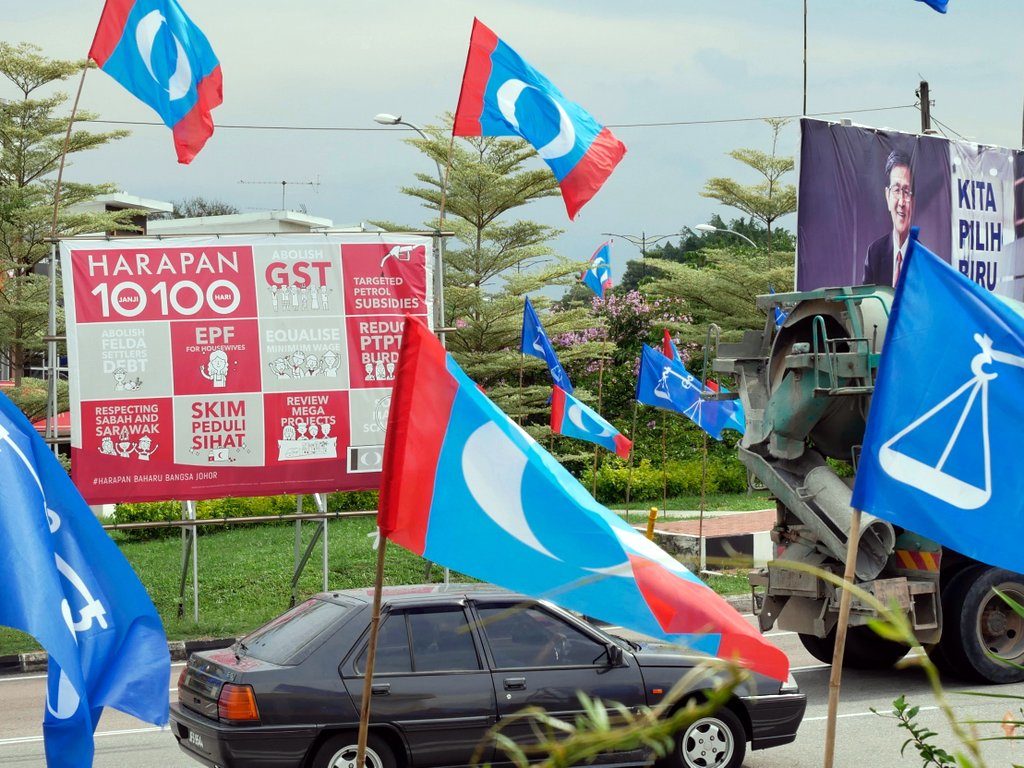
Beyond lambasting these Pakatan plans as impractical, the BN took out full-page ads in local (party-linked and owned) newspapers starting well in advance of the election, touting its own prudential management, including this one from the 1 April 2018 edition of The Star.
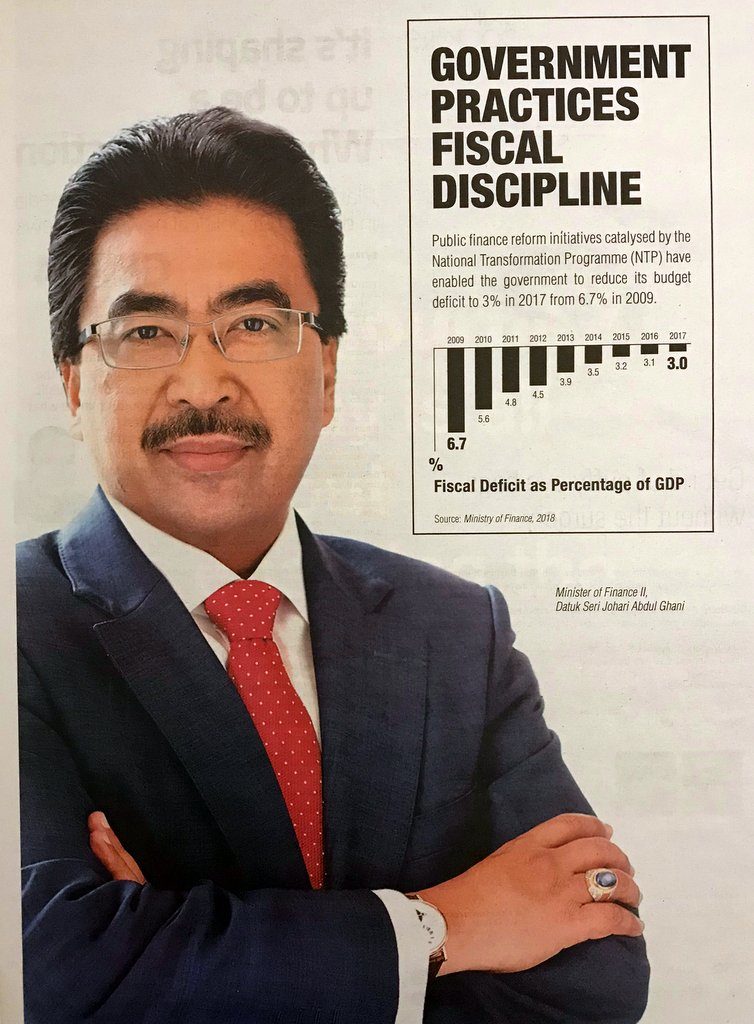
The ideologically left-wing Parti Sosialis Malaysia, for its part, faults BN policies for rising costs of living, as at this PSM fundraiser in Kajang, Selangor.
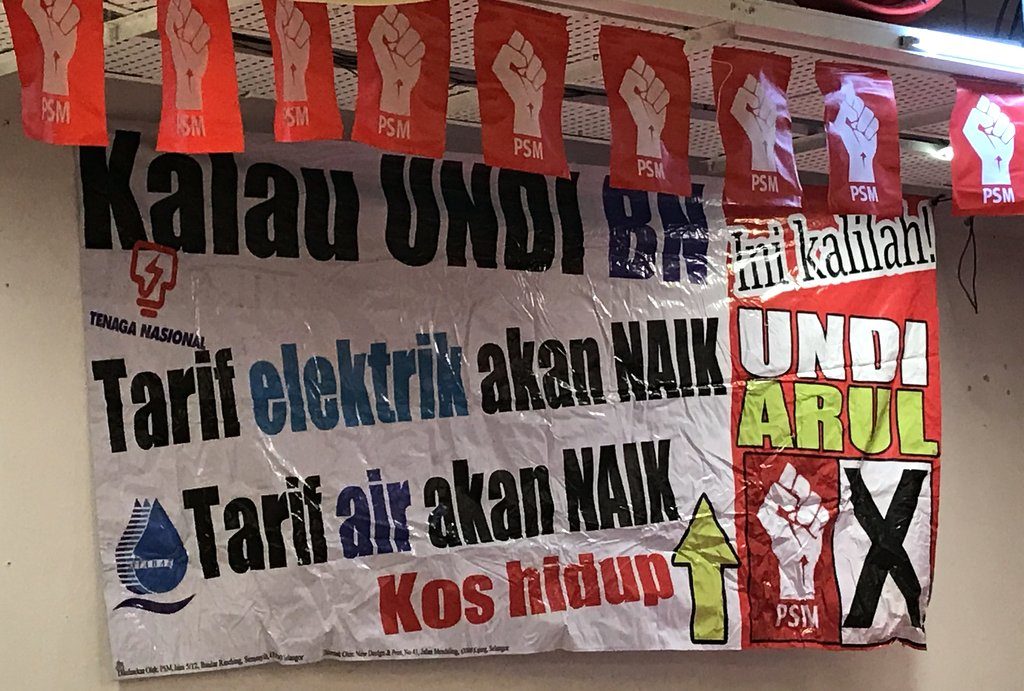
WOMEN: The core of BN machinery is traditionally component-party women’s wings; while some opposition parties, and now Pakatan Harapan overall, have such structures, only Parti Islam seMalaysia’s (PAS) Muslimah has rivalled UMNO’s Wanita (and junior counterpart, Puteri) in scale and reach. Not only are members of these wings—ready for deployment in matching colour-coded baju kurung and tudung or t-shirts—involved on the ground and at party events, but both parties aggressively woo women as voters.
Pakatan launched a Bangkit & Ubah (Arise & Change) campaign ahead of Nomination Day to galvanise women’s support, reinforcing the theme with a ceramah in Hulu Kelang, Selangor conspicuously dominated by female speakers and phalanxes of volunteers from the various segments of Wanita Pakatan Harapan.
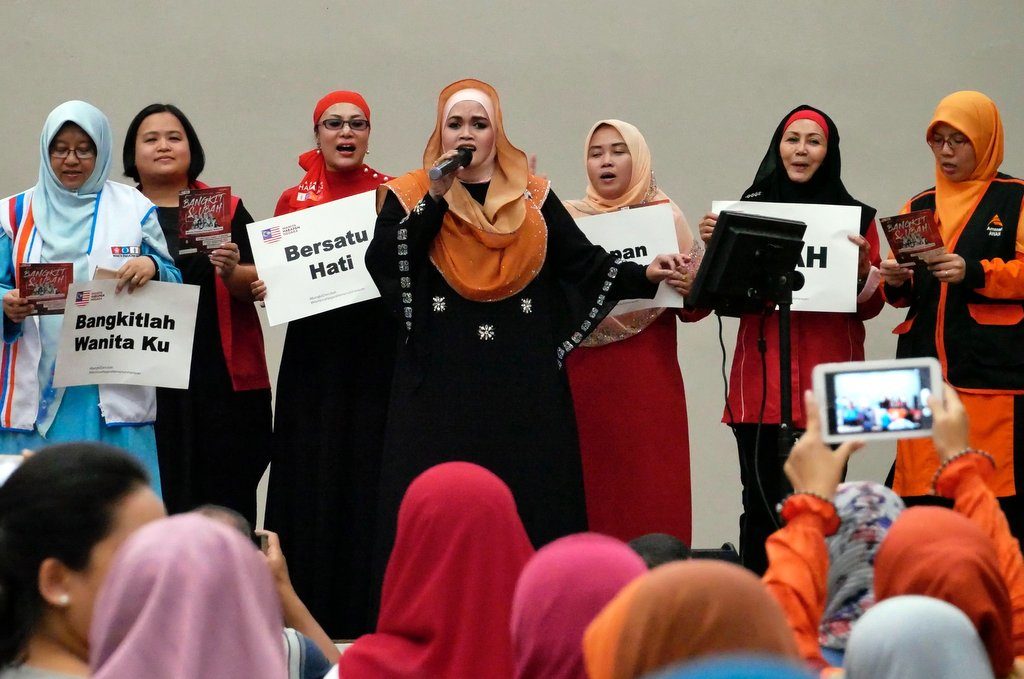
The opposition coalition’s get-out-the-vote drive specifically targets women too, including with this illustrated brochure from the state government-backed Penang Women’s Development Corporation.
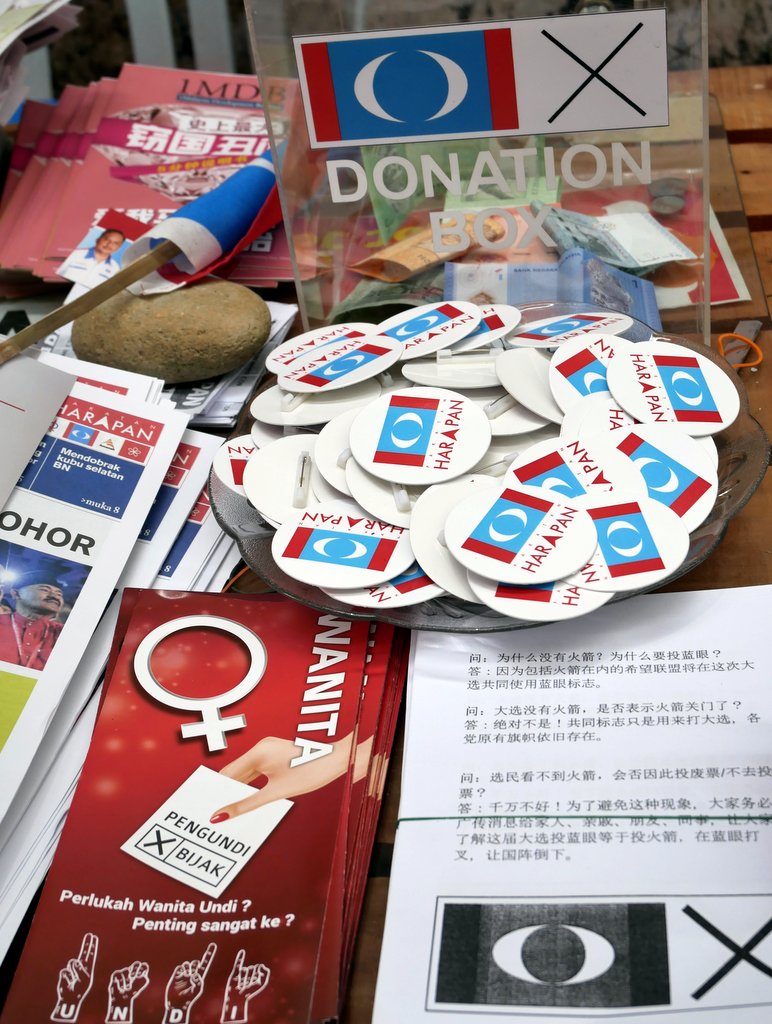
A BN advertising blitz promises to support women both as wives and mothers and in their careers, as in this billboard peppering the North-South Highway. The BR1M posters mentioned above also, for instance, feature women alternatively bedecked with shopping bags and in a blazer and hard-hat, on her handphone at a worksite.
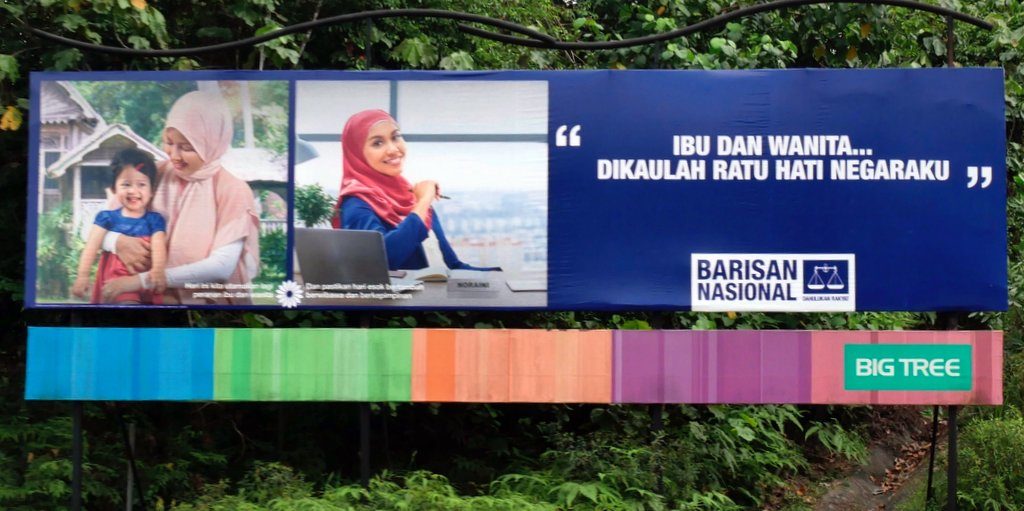
YOUTH: While all parties court the youth vote, notwithstanding the segment’s comparatively unreliable turnout, PH is going all out this time. The opposition coalition clearly hopes to woo disproportionately anti-establishment young voters to the polls—and to discourage an undi rosak (spoiled ballot) campaign among (mostly) young voters dissatisfied with both BN and PH. PH ran over a hundred candidates under the age of 40 (there are 32 in Dr Mahathir’s Bersatu alone). Young BN candidates are far more scarce—UMNO nominated only two to stand this time—but both state-specific and federal campaign pitches emphasise education, career-development, recreational activities, and other themes to appeal to youth.
The 25-year old Syed Saddiq—speaking here in Parit Jawa, Johor—turned down an Oxford scholarship to contest under Bersatu in Muar.
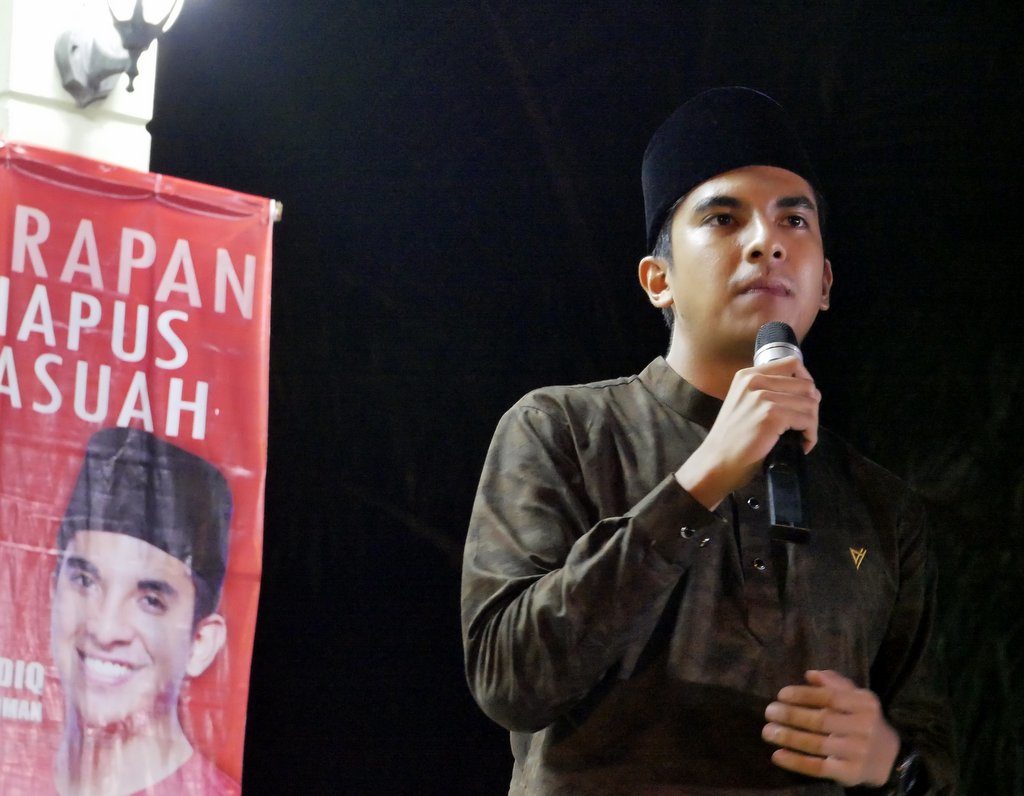
His audience, as is common at ceramah, was decidedly multigenerational.
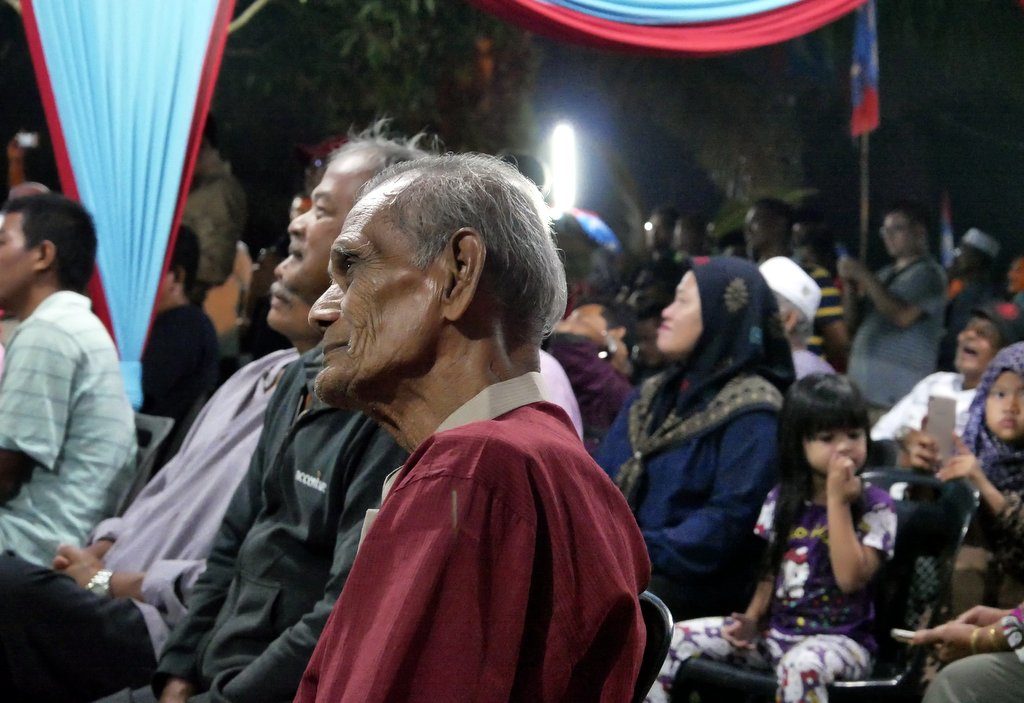
BN woos youth in Perak with playing fields and start-up capital.
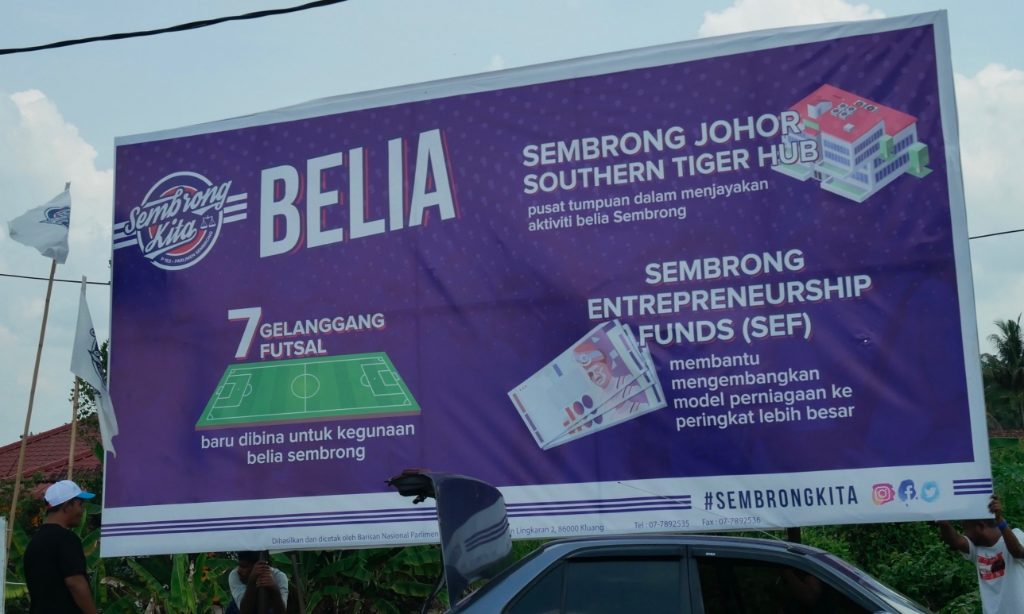
FLAGS: Last but not least, flags and bunting galore offer a colourful, fluttery, ever-present reminder—lest anyone forget—of the campaign in progress, making long country roads more interesting and towns visually cacophonous. The EC rules require near-immediate removal of these and other campaign decorations after the polls; while scattered flags remain (and they started to sprout before Nomination Day), they are the ephemeral emblem of the spectrum of alternatives and aspirations the campaign embodies.
This jumble of peacefully coexisting emblems along a Lumut, Perak road gives no indication of the heated battles behind the banners.
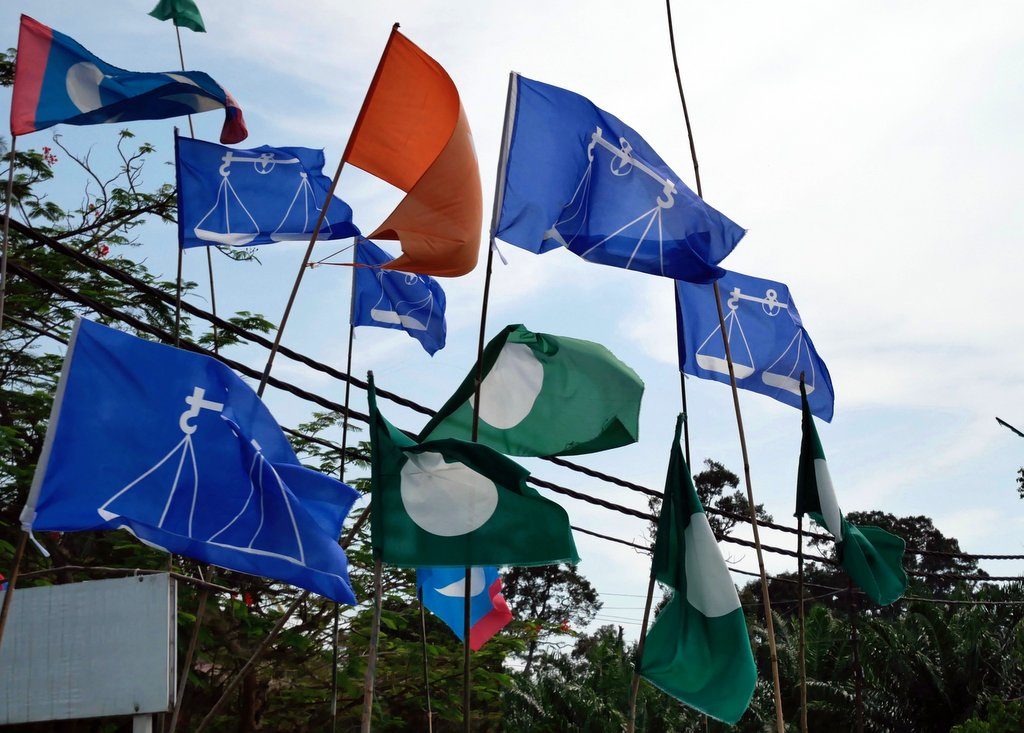
A riot of flags makes scenic Pagoh, Johor even more colourful. At least four parties have bilik gerakan within two small town blocks, adding to the montage.
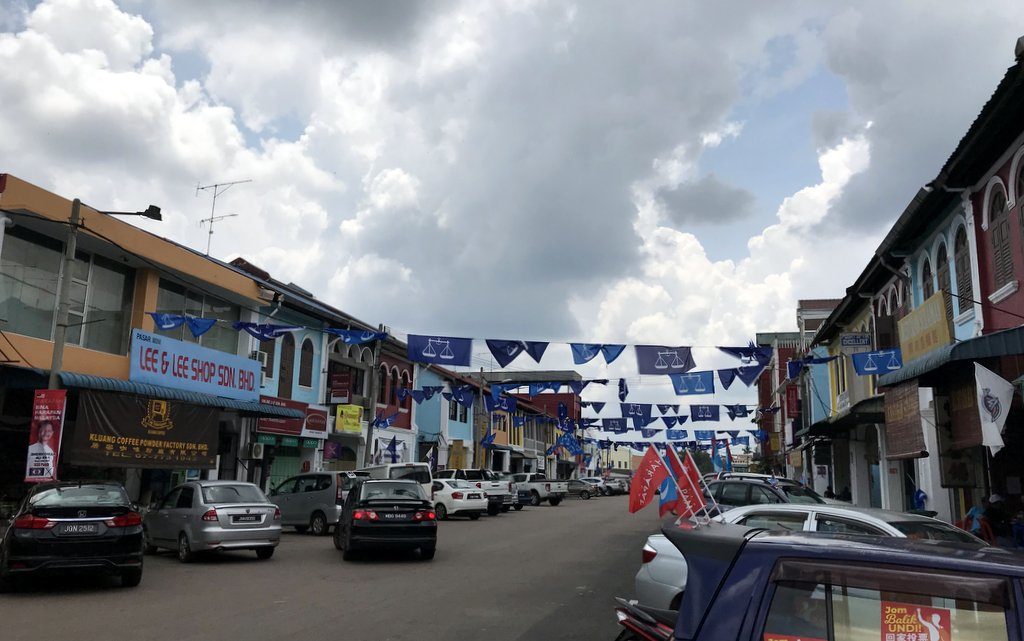
Flag art is a campaign-period genre all its own—wau such as this one in Teluk Intan, Perak are popular, but also boats, cannon, tanks, and more.
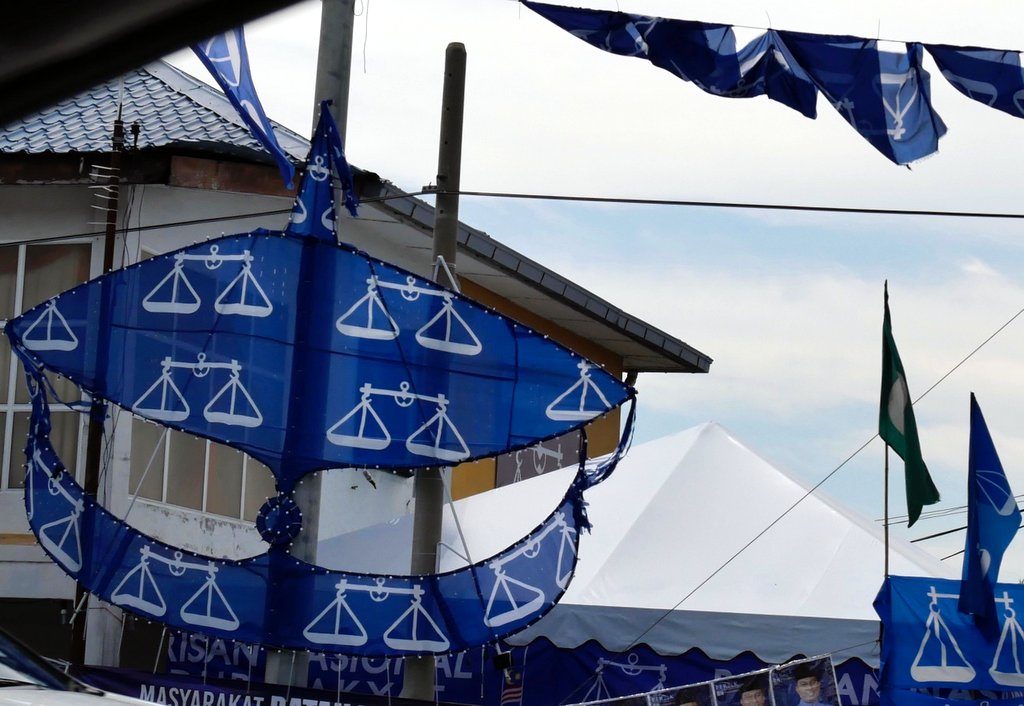
 Facebook
Facebook  Twitter
Twitter  Soundcloud
Soundcloud  Youtube
Youtube  Rss
Rss 